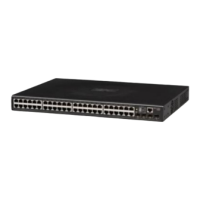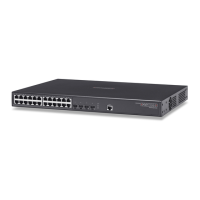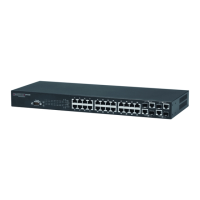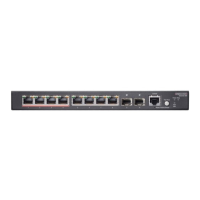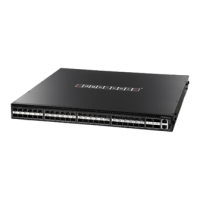Configuring the Switch
3-6
Web Configuration
Displaying Status Overview
You can easily identify the system by displaying the device name, location and
contact information.
Field Attributes
System Information
• System Name – Name assigned to the switch system.
• System Location – Specifies the system location.
• System Contact – Administrator responsible for the system.
• Number of Ports – Number of built-in ports.
• Hardware Version – Hardware version of the main board.
• Software Version – Version number of the code.
• Serial Number – The serial number of the switch.
Address Information
• Management VLAN – ID of a configured VLAN through which you can manage
the switch. By default, all ports on the switch are members of VLAN 1. The
management station must always be attached to a port on the management
VLAN.
• IP Address – Address of the VLAN to which the management station is attached.
(Note that the management station must always be on VLAN 1. Valid IP
addresses consist of four decimal numbers, 0 to 255, separated by periods.
• Subnet Mask – This mask identifies the host address bits used for routing to
specific subnets. (Default: 255.255.255.0)
• Gateway IP Address – IP address of the gateway router between the switch and
management stations that exist on other network segments. (Default: 0.0.0.0)
• MAC Address – The physical layer address of the switch.
Port Information
• Type – Indicates the port type.
• Link Status – Indicates if the link is Up or Down.
• Speed/Duplex Status – Shows the current speed and duplex mode.
- Auto: Not currently connected, will auto-negotiate these settings.
- 10HDX: 10 Mbps half duplex.
- 10FDX: 10 Mbps full duplex.
- 100HDX: 100 Mbps half duplex.
- 100FDX: 100 Mbps full duplex.
- 1000FDX: 1000 Mbps full duplex.
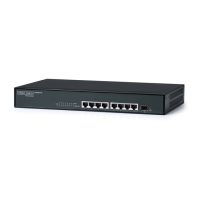
